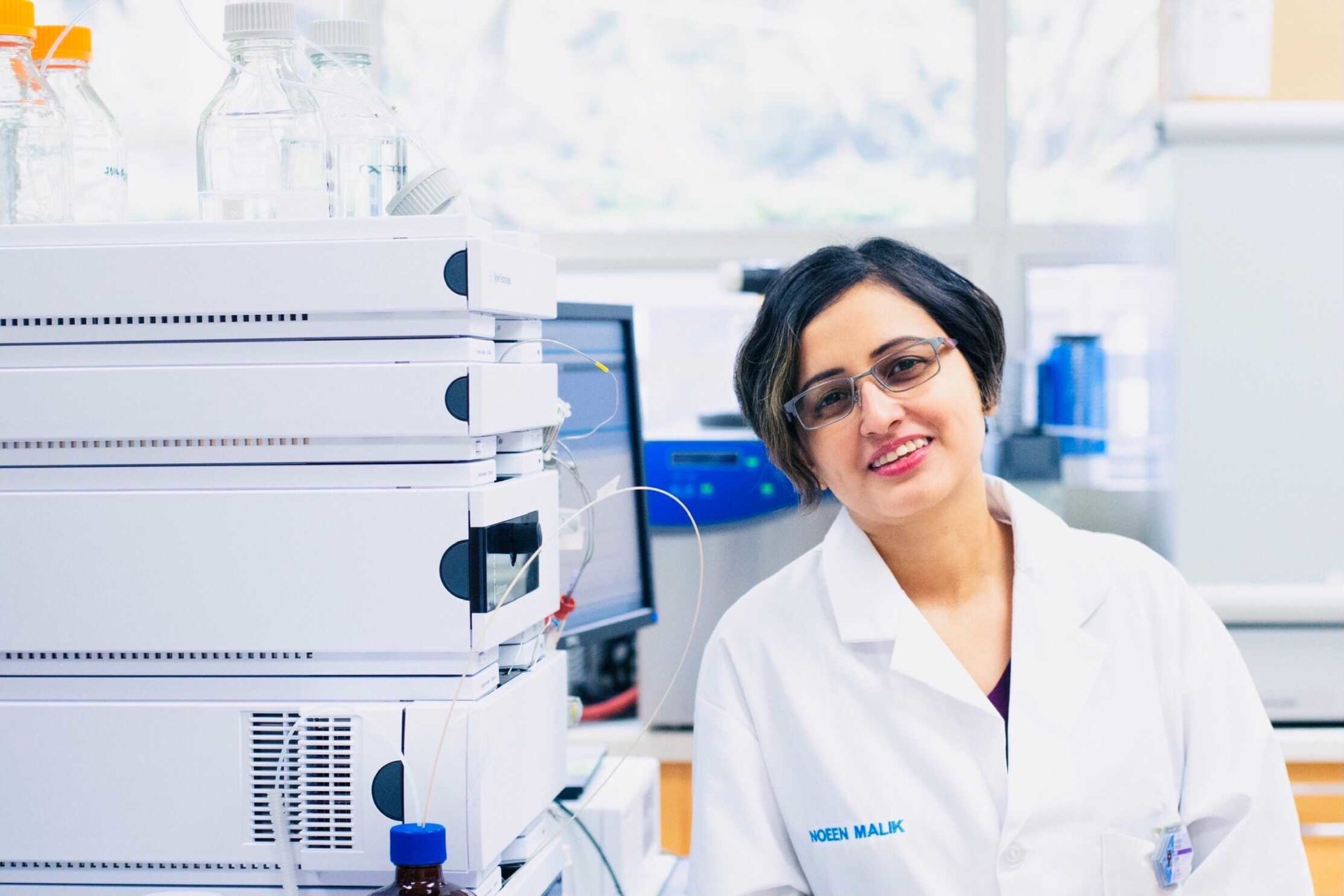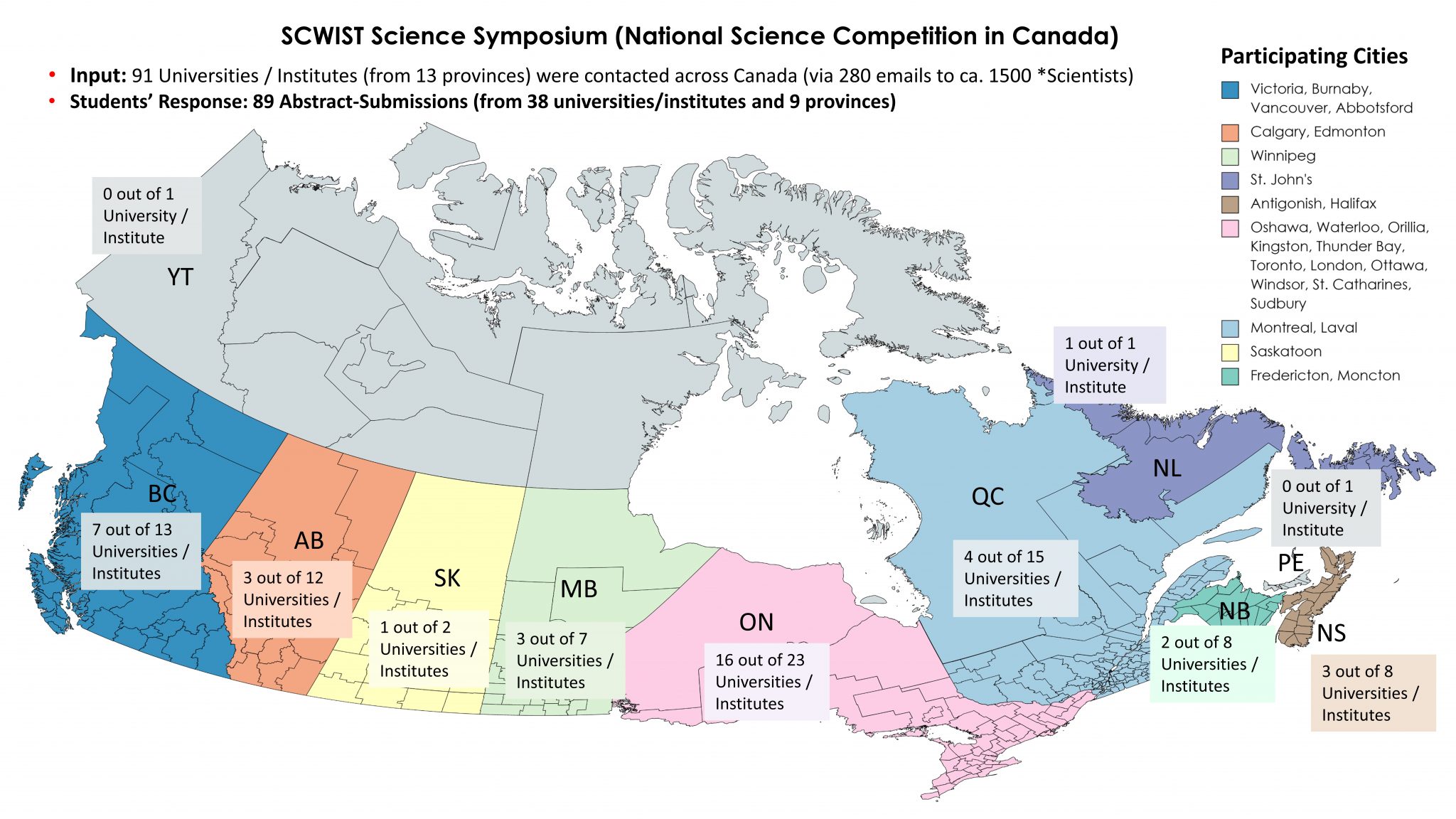From dream to reality: Creating the SCWIST Science Symposium
Back to Posts
Creating the SCWIST Science Symposium
Dr. Noeen Malik was still completing her undergrad degree when she first had the idea for a Science Symposium for younger students.
“When I was in the lab, and I saw these conferences and opportunities happen, it was always postdocs or senior scientists who got the privilege to attend and present their work. There are far fewer opportunities for undergraduate and graduate students, especially for those working in labs with less funding.”
The idea stuck with her, occasionally rising to the surface to thought out a bit more as she completed her schooling, culminating in a PhD in radiochemistry from Germany.
It was finally at SCWIST that she decided to make her idea a reality.
After joining SCWIST, Noeen quickly found a space for herself on the events committee, under the guidance of Dr. Khristine Carino, Director for Events.
An enthusiastic volunteer, Noeen quickly became the SCWIST Events Lead and then the Acting Director of Events.
It was in her final role that Noeen pitched her idea of a science event for undergrad and grad students to Khristine.
“I thought it was an excellent idea,” said Khristine. “I was excited to see what Noeen would create.”
Her project green-lit, Noeen began planning. She knew exactly what she wanted to sort out first.
“I wanted to give cash prizes to the students,” she said. “But funding was limited. So, I decided to find some.”
Noeen began reaching out to local universities and science organizations. It didn’t take long for the first sponsor to sign on. Then another. And another.
“[We’re] excited to be a sponsor of the SCWIST Science Symposium,” said Anath Ravi, Co-Founder and Chief Scientist and Clinical Officer of Molli Surgical. “Symposiums such as these are vitally important in Canada. They give a platform for bright and innovative undergraduates, whose voices may otherwise may never be heard.”
“We were happy to partner with SCWIST,” added Shane Singh of Sophos. “We have a shared goal to unlock the potential of women and girls in STEM, and in the belief that diversity in STEM is a competitive advantage.”
Sponsors on board, the next stage of planning could begin.
Creating opportunities for young scientists
The Symposium quickly came to life under Noeen’s leadership. There would be five categories: Oncology & Neuroscience, Particle Physics, Artificial Intelligence, Earth & Environmental Science and Biosensing. Students would submit a short abstract outlining their work. Fifteen winners would be selected to present to the panel of judges, and of that group, three winners would be chosen. The first-place winner would receive $1500, the second $1000 and the third $750. The remaining 12 finalists would each receive a $150, and finally, all students who submitted an abstract would receive an honorary mention in the Symposium booklet.
“Young scientists—and especially young female scientists—are key figures in completing research projects, but you often don’t see their names gracing the top of research papers or even getting any credit at all,” said Noeen. “I wanted to create an opportunity for these young scientists to present and receive recognition for their work.
To get the word out, Noeen reached out to 91 universities across Canada about her fledgling event.
“I found 1500 email addresses!” Noeen laughed. “I pulled them from the university websites, or really anywhere I could find them. I didn’t want any student to be able to say that they couldn’t participate because they didn’t hear about it. And I emailed them all between midnight and 4 in the morning so the email would be in the top of everyone’s inbox when they signed on in the morning.”
Her hard work paid off. Over the next few weeks, abstracts began flooding in—88 in all, from 38 universities across nine provinces.
“I was extremely pleased with the turnout,” beamed Noeen. “There was a great spread across each category from some brilliant young scientists.”
“It is brilliant to see the research submissions from so many incredible female students from 38 universities across Canada,” agreed Steve Eccles, Dean of Northeastern University Vancouver.

From 88 to 15
“It’s going to be a challenge.”
Those were the words from Dr. Thomas J Ruth, Senior Scientist at TRIUMF and the BC Cancer Agency.
With 88 abstracts in hand and only 15 spots available in the presentation round, the category judges had a difficult task ahead of them. Each abstract was able to score up to decent points based on novelty (idea, design), methodology (approach, scientific design and percentage of student’s input), application (current applications and benefit to society) and future scope (the growth within the next five years).
Dr. Bethany Edmunds, Director of Computer Science at Northeastern University, echoed Dr. Ruth’s words, “The entries were highly competitive.”
Eventually, the numbers were whittled down, and the top three abstracts from each of the five categories were selected to go to the next round: presenting to the senior researchers.
In each session, one young scientist would present their research and have a discussion with two senior science judges about their work, followed by a question and answer session between the young scientist, judges and audience at the end of the session.
Each of the fifteen presentations would be marked on a 30 point scale. Presentation (how comprehensive and precise the presentation material is), knowledge (how well-informed the presenter is), interaction (how well the presenter delivers the presentation, how easy/complex the delivery was for the audience to follow along with and how well the presenter answered questions) and content (the points earned during the selection process).
Overcoming obstacles and breaking barriers
After decades of hard work to promote young women’s interest in STEM, many are now rejoicing to hear that enrollment in university STEM programs has been steadily increasing since 2000. Women now make up 56% of undergraduate students in STEM.
But the fight isn’t over yet.
“Women in STEM often lack professional role models and mentorship in university,” said Ashley van der Pouw Kraan, Symposium Vice-Chair. “And once they enter the workforce, they often struggle to gain recognition of promotions in male-dominated fields. The Symposium is one act amongst many to help amplify their voices and share the story of their successes.”
“The Symposium highlights how critical diversity is to innovation,” said Mounia Azzi of adMare. “And how important the contributions of female scientists are to every scientific field and every aspect of society.”
And while the important work of making STEM education equitable for all is a long way from being done, the Symposium offers a glimpse into the future of STEM—one in which women are leading the way.
Keep in Touch
- Stay up to date with all the latest SCWIST news and events by connecting with us on LinkedIn, Facebook, Instagram and X, or by subscribing to our newsletter.